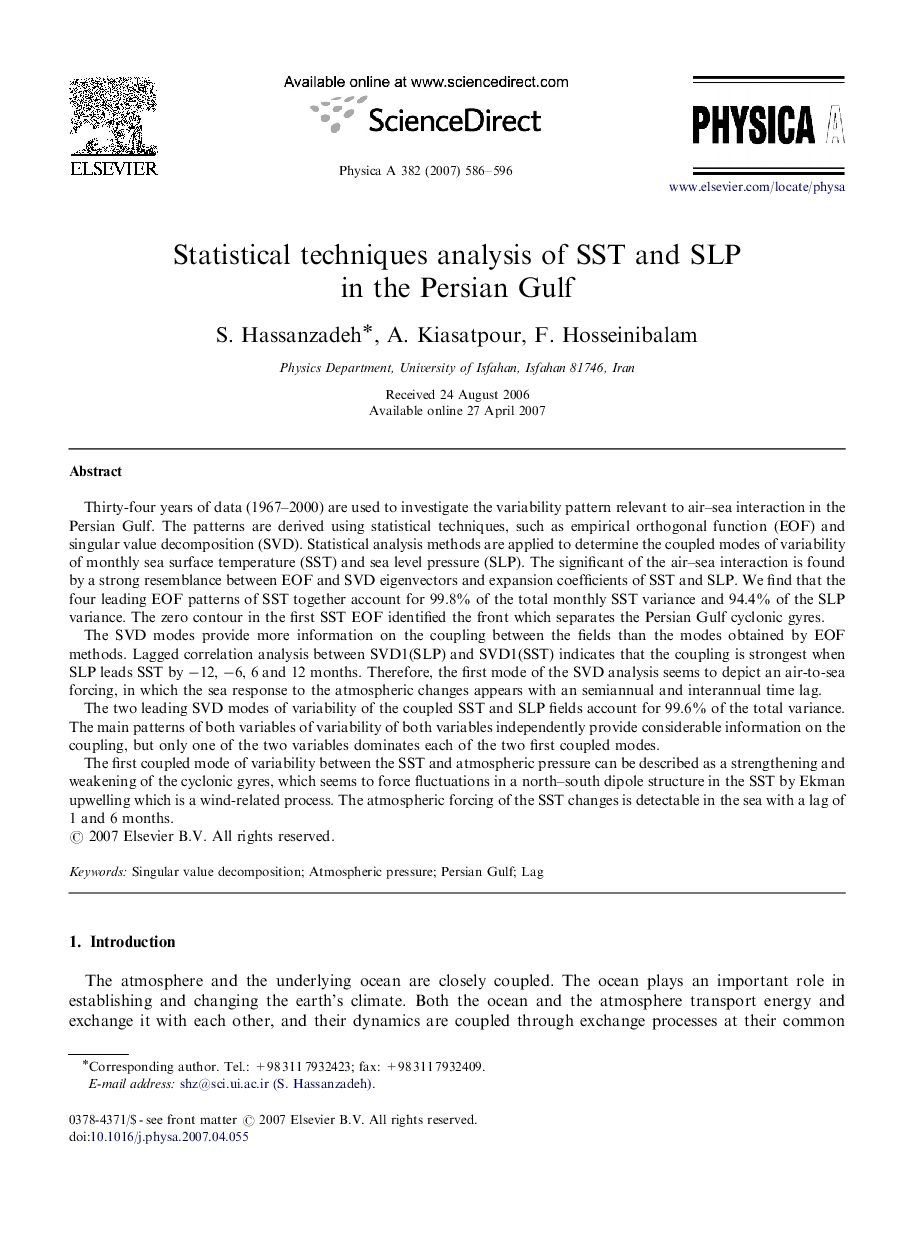| کد مقاله | کد نشریه | سال انتشار | مقاله انگلیسی | نسخه تمام متن |
|---|---|---|---|---|
| 976720 | 933148 | 2007 | 11 صفحه PDF | دانلود رایگان |

Thirty-four years of data (1967–2000) are used to investigate the variability pattern relevant to air–sea interaction in the Persian Gulf. The patterns are derived using statistical techniques, such as empirical orthogonal function (EOF) and singular value decomposition (SVD). Statistical analysis methods are applied to determine the coupled modes of variability of monthly sea surface temperature (SST) and sea level pressure (SLP). The significant of the air–sea interaction is found by a strong resemblance between EOF and SVD eigenvectors and expansion coefficients of SST and SLP. We find that the four leading EOF patterns of SST together account for 99.8% of the total monthly SST variance and 94.4% of the SLP variance. The zero contour in the first SST EOF identified the front which separates the Persian Gulf cyclonic gyres.The SVD modes provide more information on the coupling between the fields than the modes obtained by EOF methods. Lagged correlation analysis between SVD1(SLP) and SVD1(SST) indicates that the coupling is strongest when SLP leads SST by −12, −6, 6 and 12 months. Therefore, the first mode of the SVD analysis seems to depict an air-to-sea forcing, in which the sea response to the atmospheric changes appears with an semiannual and interannual time lag.The two leading SVD modes of variability of the coupled SST and SLP fields account for 99.6% of the total variance. The main patterns of both variables of variability of both variables independently provide considerable information on the coupling, but only one of the two variables dominates each of the two first coupled modes.The first coupled mode of variability between the SST and atmospheric pressure can be described as a strengthening and weakening of the cyclonic gyres, which seems to force fluctuations in a north–south dipole structure in the SST by Ekman upwelling which is a wind-related process. The atmospheric forcing of the SST changes is detectable in the sea with a lag of 1 and 6 months.
Journal: Physica A: Statistical Mechanics and its Applications - Volume 382, Issue 2, 15 August 2007, Pages 586–596